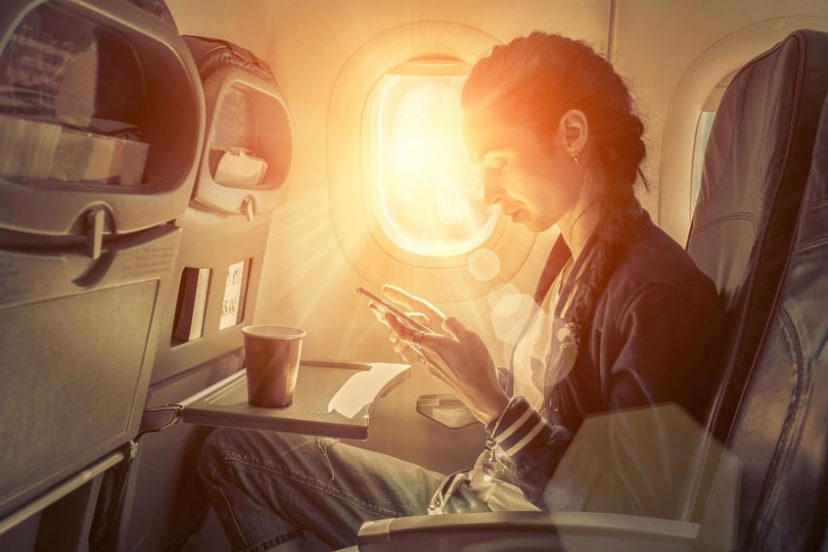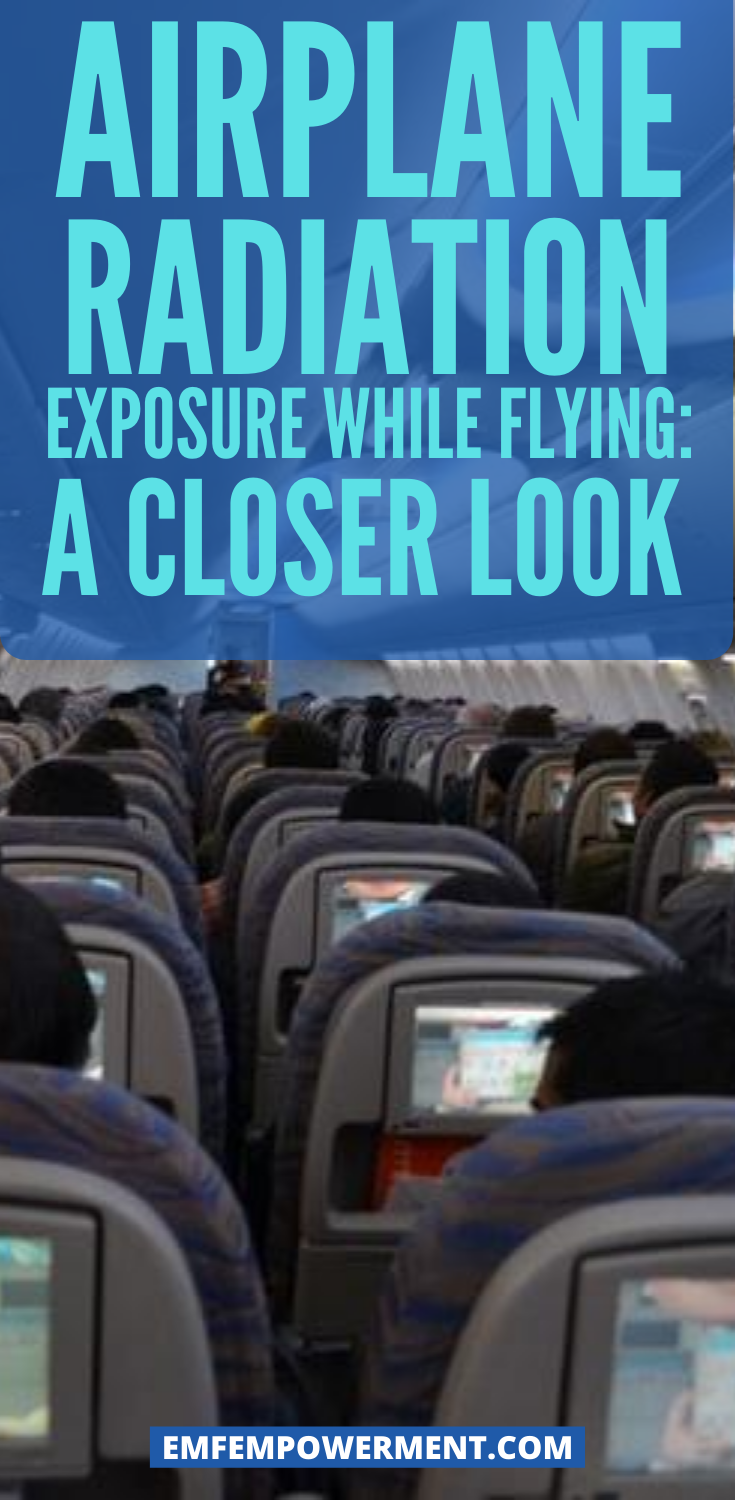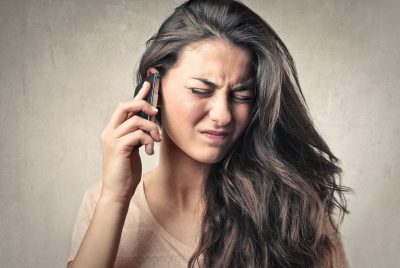On April 3, 1973, the first mobile phone was created. Since then, cell phone technology has…
Airplane Radiation Exposure While Flying: A Closer Look

*We may earn a commission for purchases made using our links. Please see our disclosure to learn more.
When you think of airplane travel, what do you suppose the biggest source of radiation is? It’s got to be the full-body scanners used by security agents, right?
Well, that’s partially right. They’re one definite source — millimeter-wave scanners produce non-ionizing radiation. It’s not the only source, however, and certainly not the largest. You’re actually exposed to the highest amounts of radiation while you’re in the air.
To help shed some light on why that is, we’ll take a look at the types of radiation you’re exposed to while flying. We’ll also look at how you can measure your exposure level, and what you can do to protect yourself when traveling by plane.
Radiation in airplanes
There are two sources of radiation in airplanes:
- Cosmic ionizing radiation
- Manmade EMF radiation
Let’s take a closer look at each.
Cosmic ionizing radiation
As the name suggests, cosmic ionizing radiation is produced by stars, black holes, and other natural space activity. This type of radiation is present all over Earth, but gas molecules in the air help diffuse it at ground level. At high doses, cosmic radiation has a similar effect to other forms of ionizing radiation. That is to say, it can cause cancer and other serious health problems. This is why holes in the ozone layer are such a big deal — our atmosphere protects us from damaging cosmic rays. It’s also why NASA limits the amount of time an astronaut can spend in space.
At higher altitudes, the atmosphere is less dense and the air is much thinner. This means there is far less protection from cosmic radiation than at lower altitudes. When you are at cruising altitude in a plane, you are exposed to higher doses of radiation than you are on Earth. Exposure can be increased even further anytime there is a solar event such as a flare — something that happens quite frequently.
Manmade radiation
Manmade radiation is another significant source of radiation when flying. Non-ionizing EMFs are produced by a number of in-flight components. Extra-Low Frequency (ELF) EMF radiation is created by the plane’s engines, wiring, electronic sensors, and fuselage. Radiofrequency (RF) EMF radiation is primarily generated by the plane’s communication equipment and in-flight WiFi.
The presence of all these EMF-producing items and devices inside an airplane is problematic, to say the least. Consider the fact that planes have a metal shell of an exterior. Now, think about most of the EMF-shielding devices on the market. One common element most share is that they feature metal components.
The plane’s metal shell helps trap EMF radiation inside of the aircraft. This means when you are on a plane with in-flight WiFi, you are exposed to even more EMF radiation than you would be around WiFi at home. For that reason, many individuals with Electromagnetic Hypersensitivity (EHS) find that air travel is particularly bothersome.
Calculating your risk
It’s difficult to estimate the amount of manmade EMF radiation you’re exposed to while in-flight, as it’s going to vary depending on the type of plane and whether or not there is on-board WiFi. You can, however, estimate how much cosmic ionizing radiation you’re exposed to.
The unit of measurement we’re going to use here is millisieverts (mSv), which helps us quantify the amount of ionizing radiation an individual is exposed to. To calculate your exposure, we first need to know how long you spent in the air. For this example, we will use a four-hour flight.
On the average flight flying at an altitude of 35,000 feet, passengers are exposed to .003mSv per hour. On a four-hour flight, our hypothetical passenger would have been exposed to .012mSv of radiation. For comparison sake, a chest x-ray exposes an individual to .1mSv of radiation. So the amount of cosmic radiation incurred on just one passenger flight is, in and of itself, not too concerning.
The problem appears when we consider frequent flyers. One flight may not be a problem, but what about a business traveler who flies four hours per week? If we assume they flew 50 weeks out of the year, that’s 200 hours of flying time. Two hundred multiplied by .003mSv is .6mSv, or the equivalent of six chest x-rays.
Over the course of an entire career, that could really add up. If someone kept up that pace for 20 years, they would have been exposed to 12mSv of radiation during that time. This is concerning because many experts believe an individual’s risk for cancer increases with each mSv of exposure.
And what about flight attendants and pilots who book many more hours each week than just four? The National Council on Radiation Protection and Measurements found that people in those professions received the highest annual dosage of radiation out of any radiation-exposed worker in the United States, at an estimated three mSv/year.
Protecting yourself
There is little you can do to protect yourself from cosmic radiation. The best thing is simply to limit how much you fly each year. If you work in a profession that requires frequent travel such as a flight attendant, the Center for Disease Control recommends avoiding very long flights, as well as flights over the poles or at higher latitudes. That is because more cosmic radiation is present near the Earth’s poles, and less near the equator.
With that in mind, we will primarily focus on how to protect yourself from manmade EMF radiation.
- Limit your time on the plane. One thing you can do to minimize your exposure to EMF radiation is to spend as little time as possible on the plane. That may mean investing in a seat closer to the front of the aircraft, and boarding towards the end of the line. You can’t control how long a taxi takes, but you can at least opt not to sit on the plane while boarding is taking place. Likewise, at the end of your flight, have your things easily accessible and ready to go.
- Only fly when necessary. On a similar note, don’t fly more than you really need to. That flight from Detroit to Chicago may seem tempting, but is it really necessary to fly when it’s only a couple hour drive? If you’d prefer mass transportation for convenience or environmental reasons, trains are another alternative, as are buses. Sometimes flying is unavoidable, but you can reduce your overall exposure by opting for other methods of transportation when available.
- Use an EMF protective blanket. An EMF protective blanket can help shield your body from EMF radiation. This is especially important for pregnant women, but anyone can benefit. One excellent option is DefenderShield’s EMF Radiation & 5G Protection Blanket. Made from a 100% organic bamboo fabric exterior with radiation-shielding fabric sandwiched inside, this blanket helps protect against environmental radiation in the 0-10GHz range. And it comes in two sizes: full-sized, which is 75” by 33” and perfect for covering your whole body, or standard, which is 36” by 35” and ideal for travel. Plus, DefenderShield is a trusted brand that offers a 100% satisfaction guarantee. You can return the product in 30 days for a full refund. It also includes a one-year warranty.
- Invest in a protective cell phone case. It’s no secret that cell phones produce a great deal of radiation, and if you’re using yours on the plane there’s a good chance you’re also connected to WiFi. To cut down on the radiation created by your phone, you can purchase an EMF protective cell phone case. These cases house your phone and prevent EMF radiation from reaching your body, while still allowing a signal to penetrate through. One case worth considering is SafeSleeve’s EMF Protection Anti Radiation Cell Phone Case. Available for Android and iPhone, this case is durable and impact-resistant and features vegan leather as well as military-grade EMF shielding.
- Wear EMF protective clothing. The caveat here is that you may not be able to wear this clothing through airport security, so keep your protective clothing in your carry-on bag until closer to flight time. There are several choices for EMF protective clothing on the market, ranging from tank tops to hoodies, and the best option for you really depends on your style and personal preference. That being said, BlocWave’s EMF Protection Hoodie is a simple hooded sweatshirt that you can easily pull on over your other clothes. It’s a discreet and protective option.
- Sit by the window. As mentioned earlier, the metal exterior of an airplane can trap EMF radiation inside the plane. To help counteract this, try and snag a window seat. Or, if you’re traveling with family, allow the most vulnerable member of your family to sit in that position — kids, for example, have thinner skulls than adults and are therefore more susceptible to health issues from radiation exposure.
- Take supplements prior to flying. While a supplement won’t reduce your exposure, it can help counteract the effects of EMF radiation. Supplements to try include Ginseng, with its documented radioprotective abilities. Reishi is another excellent supplement to try. Made from dried Reishi mushrooms, Reishi supplements may help shrink the size of tumors, battle depression, and boost your immune system. Reishi is a true superfood, and taking a supplement of this mushroom prior to your flight may help your body from the effects of EMF radiation. For best results with a supplement, take them regularly for a couple of weeks prior to your flight.
Closing thoughts
While airplanes may not be the most obvious source of radiation, they actually expose us to quite a bit. Between cosmic radiation and manmade EMFs, frequent flyers may find themselves exposed to unsafe levels of radiation over time. This can have an impact on an individual’s health, causing cancer, reproductive issues, and other serious problems.
For that reason, consider taking steps to protect yourself before your next flight. Supplements, protective clothing and gear, and limiting your time on the aircraft can all help keep you safe from health issues due to EMF radiation.




